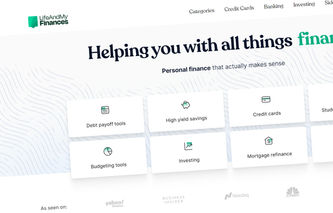| Name | Score | Visit | Annual Fee | Regular APR | Intro Offer | Credit Needed | Disclaimer | |
|---|---|---|---|---|---|---|---|---|
 | 8.8 | Visitpetalcard.com | $0 | 18.24% - 32.24% | N/A | Bad to fair (300-600) | ||
 | 6.0 | Visitindigocard.com | $75 | 24.9 | N/A | Bad (300–629) | ||
 | 5.6 | Visitfitcardinfo.com | $99 annually. One-time initial $89 fee. Additional annual maintenance fee of $75. | 29.9% | N/A | Bad (300-629) | ||
.svg) | 6.4 | Visitcreditonebank.com | $75 | 28.49% | N/A | ad (300–629) | ||
 | 6.8 | Visitmilestonegoldcard.com | $35 - 99 | 24.90% | N/A | Qualify with bad credit | ||
.svg) | 7.6 | Visittomocredit.com | $0 | 0% | N/A | Bad to fair (300–600) |
Best Unsecured Credit Cards For Bad Credit
Petal® 2 Visa® card: Our top pick.
Indigo® Mastercard®: Best card for establishing payment history.
FIT® Platinum Mastercard®: Best credit card for global reach.
Credit One Visa for Rebuilding Credit: Best for rebuilding credit.
Milestone Mastercard®: Low APR for rebuilding credit.
Tomo credit card: Best no fees credit card.
Our Top Pick:Petal® 2 Visa® Credit Card
Top pick

Petal® 2 Visa® card
4.2
Annual fee
$0
Rewards rate
1%–10%
Intro offer
N/A
Perfect for those with no credit. No credit score is needed to qualify.
192 people chose this
Learn more
Account Basics
DETAIL | METRIC |
Regular APR | 18.24% - 32.24% Variable |
Intro APR | N/A |
Balance transfer rate | N/A |
Balance transfer intro APR | N/A |
Cash advance APR | N/A |
Fees/Restrictions
TYPE | DESCRIPTION |
Annual fees | $0 |
Balance transfer fees | N/A |
Cash advance fees | N/A |
Foreign transaction fees | $0 |
Late payment fees | N/A |
- No annual fee. No foreign fee. No late payment fees.
- 1% cash back.
- 1.5% cash back when you make 12 months of on-time payments.
- No balance transfers.
- Potentially high APR
Why we like it
As far as unsecured credit cards go, the Petal® 2 Visa® Credit Card is the cream of the crop. It stands out with its high credit limit of $10,000, which completely overshadows other unsecured cards (often limited to $300).
Not only does the Petal® 2 Visa® give you some spending power, but can also earn you 1%–1.5% cash-back and 2%–10% cash-back at select merchants. No need to worry about extra fees either, as Petal® 2 Visa® won’t charge you a cent for foreign transactions, late payments, or annual fees.
What to look out for
Unsecured cards have their downsides, but the Petal® 2 Visa® makes a solid attempt to keep pitfalls to a minimum. The main drawback is that those with a rocky credit history may struggle to get approval—and if you’ve filed for bankruptcy in the last three years, you won’t be eligible.
Despite its many perks, the Petal® 2 Visa® doesn’t provide an introductory APR, which is a shame since their interest rates are on the higher end of the scale.
Establish payment history: Indigo® Mastercard® Credit Card
Establish payment history

Indigo® Mastercard®
3
Annual Fee
$75
Reward rate
N/A
Intro offer
N/A
52 people chose this
Account Basics
DETAIL | METRIC |
Regular APR | 24.9% |
Intro APR | N/A |
Balance transfer rate | N/A |
Balance transfer intro APR | N/A |
Cash advance APR | 29.9% (Variable) |
Fees/Restrictions
TYPE | DESCRIPTION |
Annual fees | $99 |
Balance transfer fees | N/A |
Cash advance fees | None in the 1st year, then either $5 or 5% thereafter (whichever is higher) |
Foreign transaction fees | 1% |
Late payment fees | Up to $40 |
- The interest rate is reasonably low at 24.9%.
- A first-year fee of just $75.
- There’s no additional monthly maintenance fee.
- The annual fee increases to $99 after the first year.
- The maximum credit limit is low—just $300.
- Late payment, overdraft, and returned payment fees can be up to $40.
- There’s a 5% cash advance fee.
Why we like it
The Indigo® Mastercard® Credit Card is a good option for those with a challenging credit history, and may even accept those who have previously declared bankruptcy.
Monthly payments are reported to all major credit bureaus, so you can recover from your turbulent credit history if you show financial responsibility and make payments on time.
If rocky credit history puts you off, Indigo® Mastercard® will let you prequalify without damaging your credit score.
What to look out for
The downside of unsecured cards for bad credit is the lack of rewards and perks— and the Indigo® Mastercard® is no exception.
The card comes with an annual fee that’ll depend on your creditworthiness—it can go up to $99.
Global Reach: FIT® Platinum Mastercard®
Global reach
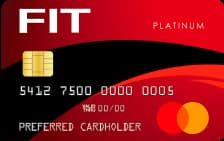
FIT Mastercard®
2.8
Annual Fee
$99
Reward rate
N/A
Intro offer
N/A
32 people chose this
Account Basics
DETAIL | METRIC |
Regular APR | 29.99% |
Intro APR | N/A |
Balance transfer rate | N/A |
Balance transfer intro APR | N/A |
Cash advance APR | 29.99% (Variable) |
Fees/Restrictions
TYPE | DESCRIPTION |
Annual fees | $99. Additional one-time $89 fee. Annual maintenance fee of $75. |
Balance transfer fees | N/A |
Cash advance fees | $10 or 3%, whichever is higher |
Foreign transaction fees | 3% |
Late payment fees | Up to $41 |
- Fast and easy application process. Results in seconds.
- $400 credit limit doubles to $800 (simply make your first 6 monthly minimum payments on time).
- There’s a one-time program fee of $89.
- After the first year, there’s a monthly fee in addition to the annual fee ($6.25).
- The initial available credit is roughly 75% of your credit limit.
- Penalty fees of up to $41.
Why we like it
The FIT® Platinum Mastercard® comes with many Mastercard perks—you can use it in over 210 countries—and with Mastercard Zero Liability Protection, you won’t need to worry about unauthorized charges.
It also offers a fast application process with free pre-approval that won’t damage your credit score. The card also has a high credit limit, doubling if you make timely payments for the first six months.
What to look out for
There’s one major problem with the FIT® Platinum Mastercard® . It ain’t cheap.
Here’s the fees:
An annual fee of $99
A monthly fee of $6.95 (after the first year)
A foreign transaction fee of 3%
And the APR is pretty high at 29.99%. So, it’s relatively easy to get your hands on it if you have bad credit, but this will come at a price.
Build Credit: Credit One Visa for Rebuilding Credit
Build credit

Credit One Bank® Platinum Visa® for Rebuilding Credit
3
Annual Fee
$75
Reward rate
1%
Intro offer
N/A
31 people chose this
Account Basics
DETAIL | METRIC |
Regular APR | 28.49% |
Intro APR | N/A |
Balance transfer rate | N/A |
Balance transfer intro APR | N/A |
Cash advance APR | 28.49% (Variable) |
Fees/Restrictions
TYPE | DESCRIPTION |
Annual fees | $75 for the first year, then $99 thereafter. |
Balance transfer fees | N/A |
Cash advance fees | $5 or 8% (whichever is higher) |
Foreign transaction fees | $1 or 3%, whichever is greater |
Late payment fees | Up to $39 |
- Earn 1% cash back on eligible purchases.
- Minimum credit limit of $300, but upwards of $2,500.
- No additional maintenance fees.
- The APR is above average.
- The first year annual fee is $75 but then moves up to $99 a year after that.
- The 8% cash advance fee is high.
- There’s a 3% foreign transaction fee.
Why we like it
We know what you’re thinking—that’s a pretty high APR rate. But, the Credit One Visa has nice perks that other cards don’t—like 1% cash back on eligible purchases(such as internet and cell phone services or groceries).
To help you keep tabs on your credit, the Credit One Visa comes with an easy-to-use mobile app and gives you free online access to your credit score. And for that extra peace of mind, Credit One Visa offers zero fraud liability to protect against unauthorized charges, if your card is lost or stolen.
What to look out for
There’s no overlooking that steep annual fee. It starts at $75 and shoots up to $99 after the first year. Coupled with the high APR charge, you may want to question if the 1% cash-back is worth it.
Lower APR: Milestone Mastercard
Lower APR
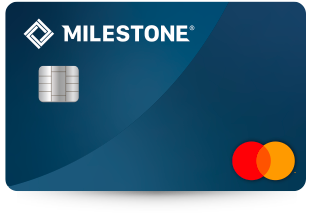
Milestone® Mastercard
3
Annual Fee
$35 –$75
Reward rate
N/A
Intro offer
N/A
27 people chose this
Account Basics
DETAIL | METRIC |
Regular APR | 24.9% |
Intro APR | N/A |
Balance transfer rate | N/A |
Balance transfer intro APR | N/A |
Cash advance APR | 29.9% (Variable) |
Fees/Restrictions
TYPE | DESCRIPTION |
Annual fees | $35–$75 for the first year, then $99 thereafter. |
Balance transfer fees | N/A |
Cash advance fees | $5 or 5%, whichever is higher (not to exceed $100) |
Foreign transaction fees | 1% |
Late payment fees | Up to $40 |
- The APR is 24.9%—one of the lowest rates for poor/bad credit applicants.
- The annual fee is between $35 and $75 in year one—then $99 a year after that.
- The foreign transaction fee is just 1%.
- The upper credit limit on this card is just $300.
- There may be an additional maintenance fee of $35 each year.
- The cash advance fee is 5%.
- Penalty fees of up to $40.
Why we like it
Yes, the APR is high—but for unsecured cards for bad credit, it’s still lower than the other rates on this list. We also like that the Milestone Mastercard doesn’t charge monthly fees, which helps you cut down on your total expenditure.
Like most unsecured cards, the Milestone Mastercard reports to the three major credit card bureaus, which can help you build up your credit history (and get a better card!). But it can backfire if you consistently make late payments or fail to pay, lowering your credit score.
It’s fairly easy to apply for—there’s a soft-inquiry pre-qualification process with no minimum credit score requirement.
What to look out for
The APR is relatively low, but watch out for the cash advance APR, which is comparatively higher. There’s also an annual fee which ranges from $35–$75, but goes up to $99 after the first year. And one more thing—you’ll get charged a 1% foreign transaction fee. Not much, but it’s there.
Unfortunately, there’s no rewards program or sign-up bonuses on this one.
No fees: Tomo Credit Card
No fees
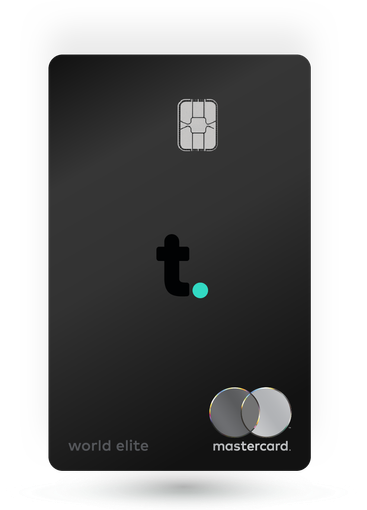
Tomo credit card
3.8
Annual fee
$0
Rewards rate
N/A
Intro offer
N/A
42 people chose this
Account Basics
DETAIL | METRIC |
Regular APR | 0% |
Intro APR | 0% |
Balance transfer rate | N/A |
Balance transfer intro APR | N/A |
Cash advance APR | N/A |
Fees/Restrictions
TYPE | DESCRIPTION |
Annual fees | $0 |
Balance transfer fees | N/A |
Cash advance fees | N/A |
Foreign transaction fees | $0 |
Late payment fees | N/A. You must pay your balance in full each month. |
- 0% APR.
- No annual fee.
- No credit check.
- No rewards.
- Need to link to existing bank account.
Why we like it
The Tomo Credit Card has many unique features that set it apart from other unsecured cards, like the seven-day automatic payment (which helps to keep your credit utilization low and improve your credit score). Weekly payments also mean you won’t carry a balance and won’t need to pay APR rates. Best of all, Tomo doesn’t charge you any fees at all.
There are other perks, like discounts with DoorDash, HelloFresh, Lyft, and ShopRunner. The card is also easy to get hold of, as they don’t require a credit check or US citizenship.
What to look out for
There’s no credit check, but Tomo has its own data points like income amount and stability, credit card balance, phone number, and email address.
You’ll also need to link Tomo to an existing bank account, so they can automatically pay off your weekly charges. If you prefer monthly payments, this one might not be for you.
Top Unsecured Credit Cards for Bad Credit
Applying for a credit card with bad credit is like turning up to a job interview an hour late. The odds are already stacked against you.
Like credit card issuers, the top employers will turn you down immediately. But there are some that will look past your slip-ups and give you a chance to redeem yourself. They may not be the greatest, but at least you’ll get what you came for.
Having bad credit means you can’t expect the best of the best—but there’s plenty of opportunity to work your way up and eventually get your hands on those top credit cards.
Awesome unsecured credit cards for bad credit.
How to get approval with bad credit.
How to choose between secured and unsecured credit cards.
Similar articles:
How We Chose These Credit Cards
There’s no way around it—unsecured cards for bad credit often mean high APR rates and extra fees. But for our top picks, we also went through the perks they offer.
We get it—approval with bad credit is a struggle, especially when the average credit score in the US is currently around 716, which is considered good.
Our selection caters to those with poor or no credit, with a high likelihood of approval. Many of the cards on our list also give you a chance to build credit—so you can eventually escape the high APRs and monthly fees and make your way to a cheaper credit card.
What Is an Unsecured Credit Card?
As the name implies, an unsecured credit card isn’t secured by collateral(aka a deposit). Your application approval and credit card rates will depend on other factors instead:
Payment history
Source of income
Ongoing debt
No collateral means higher risk for lenders, who, in turn, raise the rates. This is why interest rates will vary depending on your financial background (bad news for those with poor credit).
Unsecured cards are the most common type, as they appeal to those with good credit scores or who prefer not to pay a security deposit.
How do unsecured credit cards work?
As with most credit cards, an unsecured one comes with a standard limit. You can make transactions and purchases on your credit card, adding to its balance.
Ideally, you’ll pay it off monthly to avoid any interest charges. If you reach the card limit, you can only make purchases if you pay down your balance.
This way, you’ll free up space for available credit, and won’t have to apply for a new line of credit (which can harm your credit score if overdone).
Unsecured Cards for Bad Credit
Let’s be honest, getting a credit card with bad credit is no easy task—
But to be clear, it’s far from impossible.
The Consumer Financial Protection Bureau says approximately 45 million Americans are considered “credit invisible”, meaning they have no credit score. A 2021Experian study showed that 30% of US consumers have subprime credit. There’s certainly a market for those with poor or no credit.
So if you’re struggling with your credit, you can still get a card, but there’s a catch. Lenders consider those with a bad credit score riskier, so they are likely to charge higher interest rates.
Take the average interest rate for someone with a good score of 700—around 16.9%. For someone with a poor credit score (579 or lower), it climbs to 21.1%. Throw unsecured cards into the mix, and the rate goes up even further—that’s what you pay to offset the risk of no collateral or security deposit.
Based on our review, APR rates typically range from 15.99% to 29.99%. However, you can avoid those by improving your credit score, as they’re largely dependent on your financial background.
How to get approval on credit cards with bad credit?
Many of our top unsecured credit cards are fairly easy to get your hands on if you have bad credit, but there are a few extra measures you can take to secure that approval—
Find the right credit card
Don’t skimp on research when finding the best lender for you. It doesn’t take much digging to discover the minimum credit score requirements for each credit card.
Finding this information beforehand can save you from application rejection if you don’t meet the requirements. Most of the time, you can find this information on the card issuer’s website or through external review pages.
Robert Leonard, VP of Growth and Podcast Host of Millennial Investing, also adds, “Individuals with bad credit are going to be offered credit cards with high-interest rates, which can be severely damaging to someone’s financial future if they don’t pay off the balance each month. Instead, search for cards that have high approval ratings and a lower limit. Buy a few things on it each month, gas, groceries, etc., and pay it off in full.”
No credit checks
If you’re worried that your credit score might affect your approval chances, there’s a simple solution. Apply for a credit card that doesn’t check your credit score. The Petal® 2 Visa® Credit Card does accept applications from those without a credit history.
But if you choose to go down this route,you’ll be checked for other factors—your income, employment status, and any ongoing debts or past delinquencies.
How to Apply for a Credit Card With Bad Credit?
To apply for a credit card with bad credit, follow these simple steps:
1. Check your credit score
To find the right credit card for you, first check your credit score. Here’s a summary of credit score ranges provided by FICO.
Excellent:800–850
Very Good:740–799
Good:670–739
Fair:580–669
Very Poor:300–579
You can calculate your credit with Credit Karma, which offers an easy tool to check your credit without any damage to your score.
All the lenders from our list will accept applications from those with poor credit scores(typically 300 and above). The higher your score, the more likely you’ll have lower fees or greater negotiating power to get a better deal.
2. Read the fine print
Skimming through the terms and conditions is tempting. But pay attention to the fine print—you’re making a financial decision, not just updating Apple Podcasts. Skim and be skimmed.
Here are some features to take notice of—
APR
The Annual Percentage Rate is the annual interest rate on the balance of your credit card. For unsecured cards for bad credit, it tends to range between 15.99%–29.99%. It will vary from person to person, depending on the credit score, payment history, income, and other factors.
Take a look here for more details: What is a Good APR Rate?
Annual fee
This one is self-explanatory—this is what you’ll need to pay every year. Some cards won’t charge an annual fee, which will help decrease your overall rates. Other cards will charge up to $99, which falls at the higher end of the scale among our recommendations.
Watch out for other costs—foreign transaction fees, late payments, prepayment fees—as you’ll find that they tend to add up!
Credit limit
Put simply, this is the maximum amount of money you can spend on your credit card. Your limit comes with monthly payments, so you can pay back what you spend. Every purchase adds to your credit card balance, which is subtracted from your credit limit.
In 2020, the average credit card limit was $30,365 (source)—but a bad credit score means greater risk, as we said before. For unsecured credit cards targeted at those with poor credit, you’ll often find credit limits of $300. In rare cases (such as our Top Pick), this amount can be much larger, but you’ll likely have to prove your creditworthiness to qualify.
Grace period
A grace period gives you some leeway if you’re having trouble paying off your monthly balance. It’s essentially the time between the end of the billing cycle and your payment due date.
For unsecured cards targeted at poor credit, the grace period is typically between 20–25 days (when you won’t have to pay interest). But keep an eye on those dates, as you could be charged a late payment fee for going over and damaging your credit score.
Perks
One of the best things about getting a credit card is the various perks and rewards on offer. While unsecured credit cards for bad credit may have fewer compared to standard ones, they’re not impossible to find.
Some cards will provide cash-back rewards—such as the Credit One Visa for Rebuilding Credit, which offers a 1% cash back on some purchases. For the Petal® 2 Visa® Credit Card, it’s 1%–10% at select merchants.
3. Request pre-approval
Prequalification—or pre-approval—lets you gauge your chances before formally applying.
The process doesn’t guarantee approval, but it can point you in the right direction—toward cards that fit your needs and financial status. The bank will also use it to do a soft credit check on you, meaning it won’t harm your credit score.
4. Send the application
Sending your application should be pretty straightforward. The best and most efficient way is to apply online(that’s when instant approval is closest to actually being instant).
You’ll need to provide your personal and financial information, but details can differ depending on the credit card you choose. For the most part, you’ll be asked to give your:
Name and date of birth
Place of residence
Social Security number
Source of income
How to Use an Unsecured Card to Build Credit
The world of credit cards is always easier if you have a better credit score, so aim to build your credit to qualify for better cards and perks.
Here are some steps to take if you’re keen to build credit with your unsecured card—
1. Make on-time payments
Show off your financial responsibility and improve your credit by making timely payments every month—especially if your credit card reports to the three major credit card bureaus: Equifax®, Experian®, and TransUnion®.
Check out our free credit card payoff calculator for more,
2. Keep credit utilization ratio low
The credit utilization ratio is just a fancy way to describe your total balance divided by the sum of your card’s credit limits. Keeping your credit utilization below 30%is a great way to improve your credit.
To keep your ratio low, try paying down your balances early, increasing your credit limit, and decreasing your spending.
3. Maintain long-standing accounts
Lenders want to see that you can successfully manage your credit card account. A good way to prove this is to have long-standing accounts. Use only a small amount of your credit limit to keep the lenders happy.
Secured Vs Unsecured Cards
While browsing credit cards, you may come across the terms “secured” and “unsecured”. They aren’t so strikingly different and easy to get your head around. We’ve already explained how unsecured credit cards work. But—
What is a secured credit card?
Basically, a secured card is a credit card that requires you to pay a refundable security deposit to open the account. This deposit often acts as collateral and becomes your credit limit. This is the main difference between these two card types.
SECURED CREDIT CARD | UNSECURED CREDIT CARD |
Requires a security deposit, typically between $200–$2000. | Unsecured credit cards do not require a security deposit. |
Easier to qualify with poor credit, as many cards set a 579 minimum credit score. | Minimum credit scores are commonly set around 670, so those with poor credit may struggle to get an unsecured card. |
Due to the security deposit, there are often no annual fees. | Annual fees can differ depending on your financial background and credit history. |
Secured cards usually set high variable interest rates, around 24%. | Unsecured cards generally have lower interest rates, typically ranging from 13.99%–24.99% |
Very few rewards and additional perks are available. | Often include more reward cards and cash-back offers. |
Key Takeaway
So there you have it—everything you needed to know about getting an unsecured credit card for people with bad credit.
Having bad credit doesn’t mean you’re stuck with a bad credit card—at least not forever.
There are many decent options out there that can help you build your credit score and eventually upgrade your card. Remember—everyone has to start somewhere!
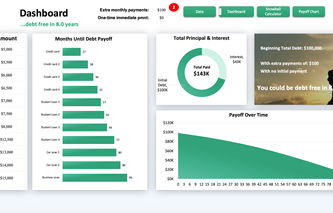
.jpg)
